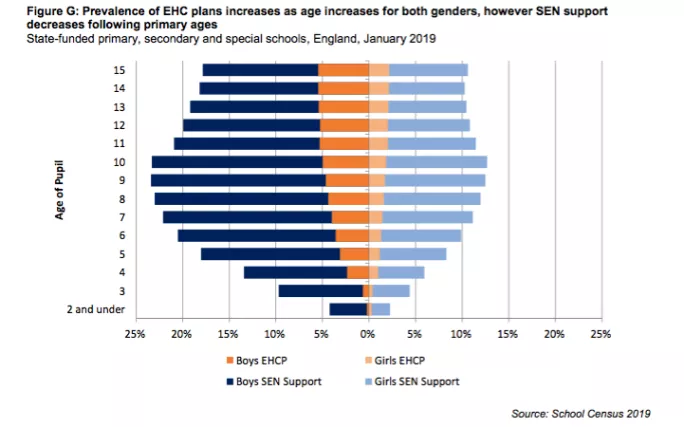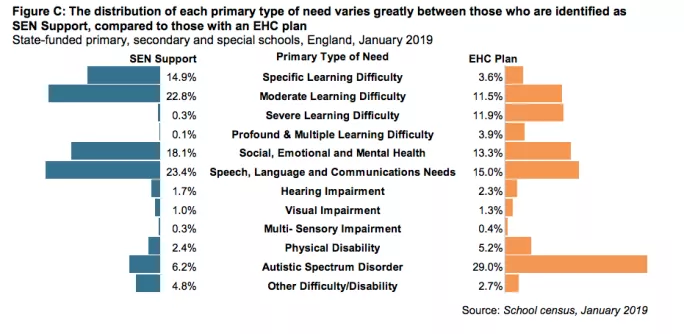Statistics published today by the Department for Education show how many children with special educational needs and disabilities are in England’s schools, what type of schools they are in and what type of needs they have.
The number of pupils with SEND has risen for the third year in a row - meaning there are now 1.3 million pupils with SEND - 14.9 per cent of all pupils.
The statistics come amid increasing calls for more funding to support children with SEND, with the government being challenged in the high court last month over its funding decisions.
Statistics: Number of pupils with SEND rises for third year in row
Viewpoint: ‘Talis shows teachers need much more SEND training’
Quick read: SEND tribunal appeals double in four years
Here are five figures that reveal more details of SEND education in England:
-
Almost one in four 9-year-old boys are identified with SEND
New statistics show that boys are more than twice as likely as girls to have severe SEND that requires an education, health and care plan.
The DfE figures show that 4.4 per cent of boys and 1.7 per cent of girls had an EHC plan, which gives legal protection to the support they need, in January 2019.
Similarly, 15 per cent of boys are on SEN support, the classification for milder SEND. This compares to 8 per cent of girls.
The proportion of pupils on SEN support decreases as pupils get older - but the percentage of those on EHC plans increases.
Today’s figures show that SEND is most prevalent among boys at age 9 - almost one in four (23 per cent) of 9-year-old boys are classified as SEND - and among girls at age 10 (13 per cent).
-
Speech, language and communication difficulty is the most common need
The most common type of primary need among pupils with SEND is speech, language and communication needs: 22 per cent of pupils with SEND have this as their primary need.
Speech, language and communication needs are also the most common need among pupils on SEN support: 23 per cent of pupils on SEN support have this has their primary need.
Autism is the most common need among pupils with an EHC plan: 29 per cent of pupils have this as their primary type of need.
-
Pupils from the Gypsy, Roma or traveller communities are most likely to be identified with SEND
Pupils who are travellers of Irish heritage and Gypsy/Roma pupils are most likely to have SEND (30 per cent and 26 per cent respectively).
-
The proportion of pupils with EHC plans in special schools has stabilised
The figures show 43.8 per cent of pupils with EHC plans were in state-funded special schools in January 2019 - the same proportion as in 2017 but slightly less than 2018, when it was 44.2 per cent.
This comes after rises since 2010 - when 38.2 per cent of pupils with EHC plans were in state-funded special schools.
-
The number of state-funded special schools is rising
There were 1,044 state-funded and non-maintained special schools in England in January 2019. This compares to 1,033 in January 2018 and 971 in January 2011.






